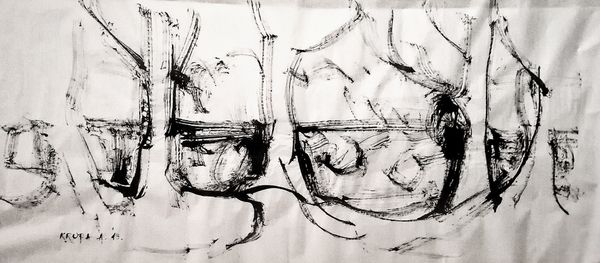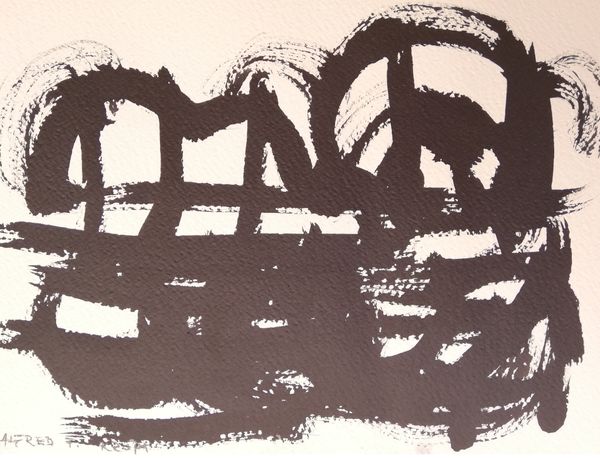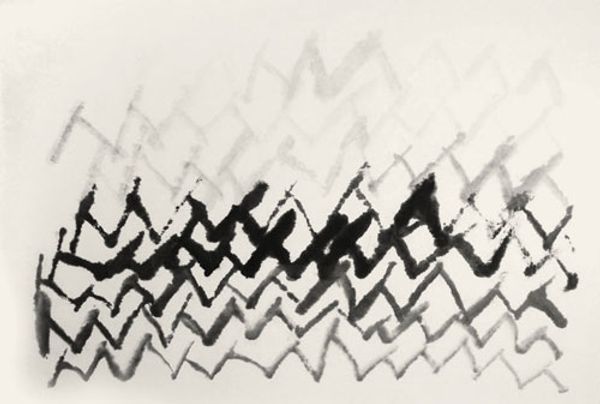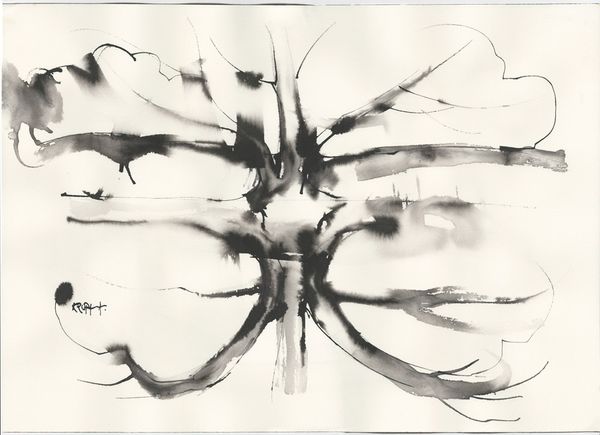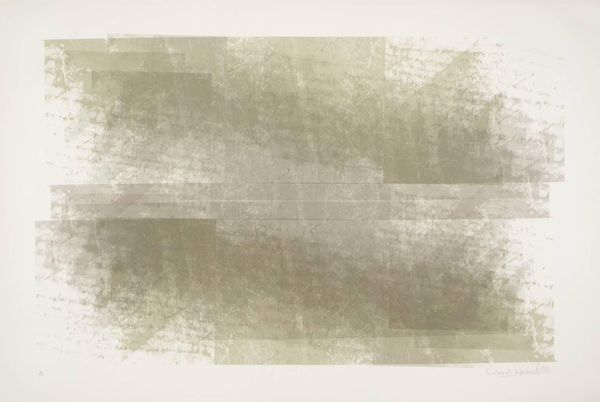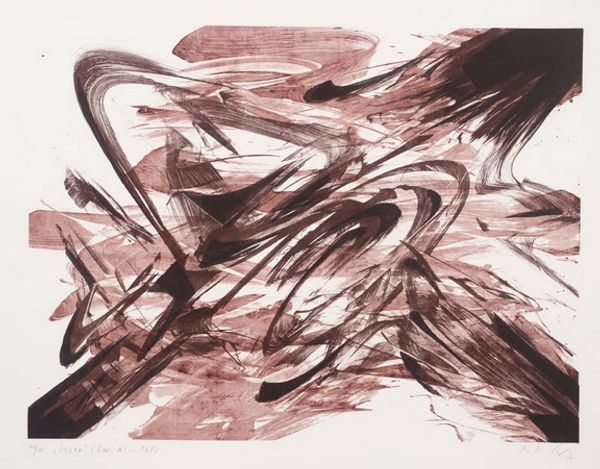
Dimensions: 70 x 100 cm
Copyright: Creative Commons NonCommercial
Editor: Here we have Alfred Freddy Krupa’s "The Bank of the Pond" created in 2007, using ink in what seems like a very gestural style. It's primarily black ink on a white background. It has this sort of ephemeral, dreamlike quality, like a memory of a landscape rather than a depiction of one. What do you see in this piece? Curator: This work engages directly with the interplay between positive and negative space, strategically manipulating line and form. Consider the repetitive, almost rhythmic, quality of the brushstrokes; each contributes to the overall structure, constructing depth and suggesting movement without relying on traditional representational strategies. Observe how the density of the ink varies, creating areas of visual weight and lightness. How does the stark contrast contribute to its impact? Editor: It’s true, the density definitely adds drama, and I notice that the reflections, or what I perceive to be reflections, almost mirror the forms above but in a less defined way. Is that playing with symmetry somehow? Curator: Symmetry is an interesting observation, but I would argue that it's more about the dynamic tension created by the mirroring, a sort of inverted echo that emphasizes the abstract qualities of the work rather than strict balance. Also note the "drip" marks are not accidental. Rather, they work together in conjunction with the artist's composition to give balance to the art, and keep our focus on the central, implied, image of water. How does considering it in those terms change your interpretation? Editor: I see, so it's about using those formal elements, line, contrast, texture created by the ink, to create a sense of depth and movement within an otherwise abstract composition. Now the use of repetition of strokes makes much more sense to me. Curator: Exactly. By attending to the formal qualities, we can begin to decode the visual language of the piece and appreciate the artist's conscious choices in constructing its meaning. Editor: That’s been incredibly insightful; I definitely have a deeper appreciation for the piece now. Curator: And I, too, see more clearly how an unconstrained approach can uncover latent symmetries.
Comments
No comments
Be the first to comment and join the conversation on the ultimate creative platform.
